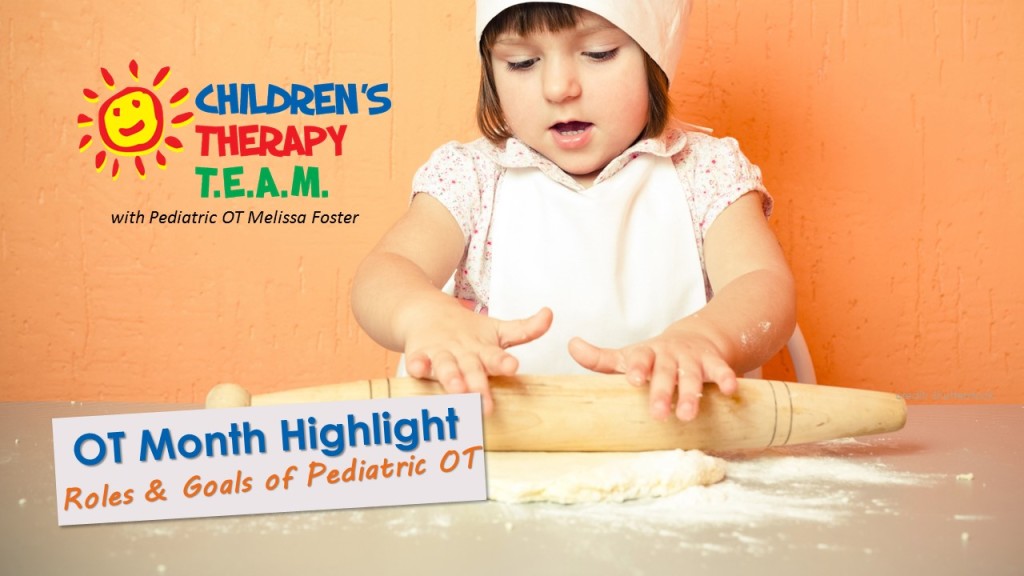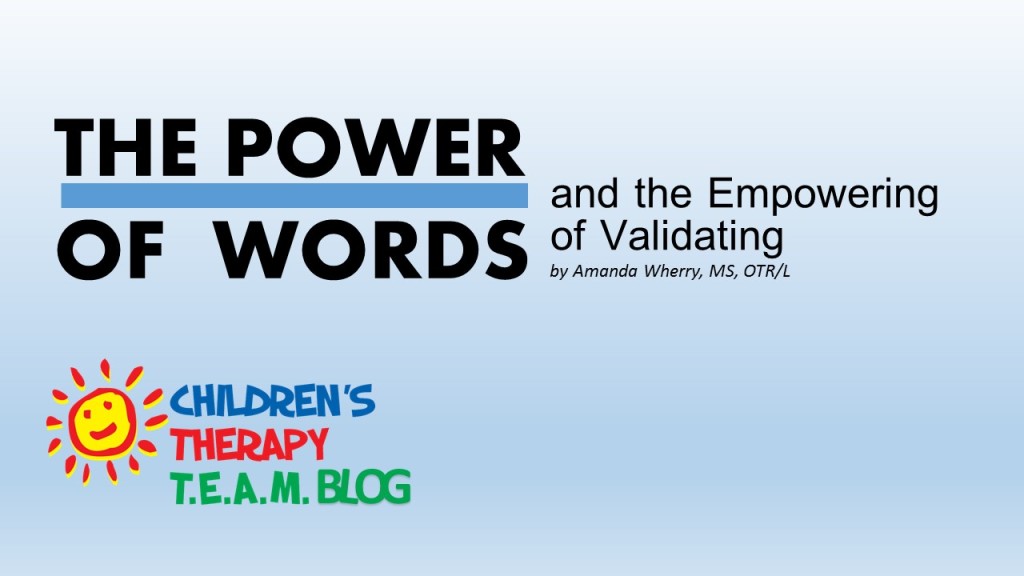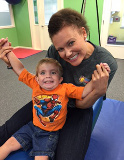Dear Melissa,
My 3 year old son is in physical therapy for falling a lot and general clumsiness. His physical therapist said that my son may benefit from occupational therapy as well. What is occupational therapy and how is it different from PT?
My 3 year old son is in physical therapy for falling a lot and general clumsiness. His physical therapist said that my son may benefit from occupational therapy as well. What is occupational therapy and how is it different from PT?
As I tend to do many of the new occupational therapy (OT) evaluations here at Children's Therapy TEAM, I seem to get asked this question almost weekly.
My 1-line layman's answer:
Physical therapy does legs and walking; occupational therapy does arms and activities.
Physical therapy does legs and walking; occupational therapy does arms and activities.
Now granted, there is quite a bit of overlap between occupational therapy and many of the other disciplines: physical therapy, speech-language therapy, vision therapy, psychological counseling, behavior therapy, teaching and coaching, to name a few. Our profession often ends up being the “catch all” for any missing pieces of the puzzle to help an individual become as independent as possible.To better illuminate this, I begin with the most overarching Pediatric OT role and goal...the OT's role in helping a child achieve independence goals.
Goal of OT is Independence
So what is the basic function of occupational therapy? In short, promoting independence in individuals across the lifespan. And the terms “independence” and “individuals” are the 2 key words. As the American Occupation Therapy Association (AOTA) puts it: Occupational therapists ask, “What matters to you?” not, “What’s the matter with you?”
So what is the basic function of occupational therapy? In short, promoting independence in individuals across the lifespan. And the terms “independence” and “individuals” are the 2 key words. As the American Occupation Therapy Association (AOTA) puts it: Occupational therapists ask, “What matters to you?” not, “What’s the matter with you?”
And guess what? It is still April and April is OT month!
The field of occupational therapy was actually founded at the end of World War I in order to use “activities” or “occupations” as a treatment modality to help wounded veterans re-acclimate to daily life, both mentally and physically. Still today, we OT’s use a variety of activities to help our clients achieve the occupations that are important to them.
The field of occupational therapy was actually founded at the end of World War I in order to use “activities” or “occupations” as a treatment modality to help wounded veterans re-acclimate to daily life, both mentally and physically. Still today, we OT’s use a variety of activities to help our clients achieve the occupations that are important to them.
AOTA defines the role of occupational therapists and occupational therapy assistants as “helping people across the lifespan participate in the things they want and need to do through the therapeutic use of everyday activities (occupations).” But what does this actually look like with our clients? Well, here at TEAM we work with children. That is the under 21 crowd. Occupational therapists DO work with a variety of different populations, but for this blog, I will focus on our pediatric clients. Let me break it down into a few age groups, and explain just a few possible roles of your OT in each.
A few examples of Pediatric OT Goals:
Birth to 3 years:
- Beginning hand use
- Using each arm/hand in play
- Using both hands together
- Crawling
- Engaging in play and pretend play with a variety of toys
3 to 5 years
- Holding a pencil/marker
- Cutting paper
- Dressing/undressing skills
- Eating properly at the table
- Playing and engaging with peers
- General school readiness
6 to 12 years
- General classroom participation
- Following directions from the teacher
- Playing and engaging with peers on the playground and in afterschool activities
- Handwriting
- Organizational skills to function in both classroom and home settings
- Time management
13 to 21 years
- Money management
- Simple meal preparation
- Simple housekeeping (laundry, cleaning, etc)
- Shopping
- Driving
- Job readiness
- Engaging with peers in meaningful leisure activities
Now I totally made up those age brackets for simplification purposes, but I wanted to emphasize how the role and goals of occupational therapy change throughout a child’s lifespan. And these are only general ideas. Again, occupational therapy is concerned with the goals of the individual family/child. For example:
- Some families/schools feel passionately about a child writing in cursive; some families feel that manuscript is just fine.
- Different families have very different leisure activities that they enjoy together: playing sports together, attending plays/movies, going to museums, dining restaurants, attending sporting events, snuggling and reading books, hiking, swimming, playing on the beach, and the list goes on and on.
- Some families/individuals want to learn basic cooking skills, others want to focus on ordering take-out or simply heating up meals in the microwave.
Each of these activities listed above has a completely different skill set required and it is the job (and joy!) of the occupational therapist to evaluate the difficult splinter skills for each task, help the individual improve his/her skills, and become as independent as possible!
Want more information on the different roles of OT, PT, ST (occupational therapy, physical therapy, and speech-language therapy)? Stay tuned! In the next several weeks I will interview therapists in each discipline and ask what he/she looks for as “red flags” for a child benefiting from those services.
Resources:
American Occupational Therapy Association, Accessed March 2016
Children’s Therapy TEAM, Northwest Arkansas
American Occupational Therapy Association, Accessed March 2016
Children’s Therapy TEAM, Northwest Arkansas








